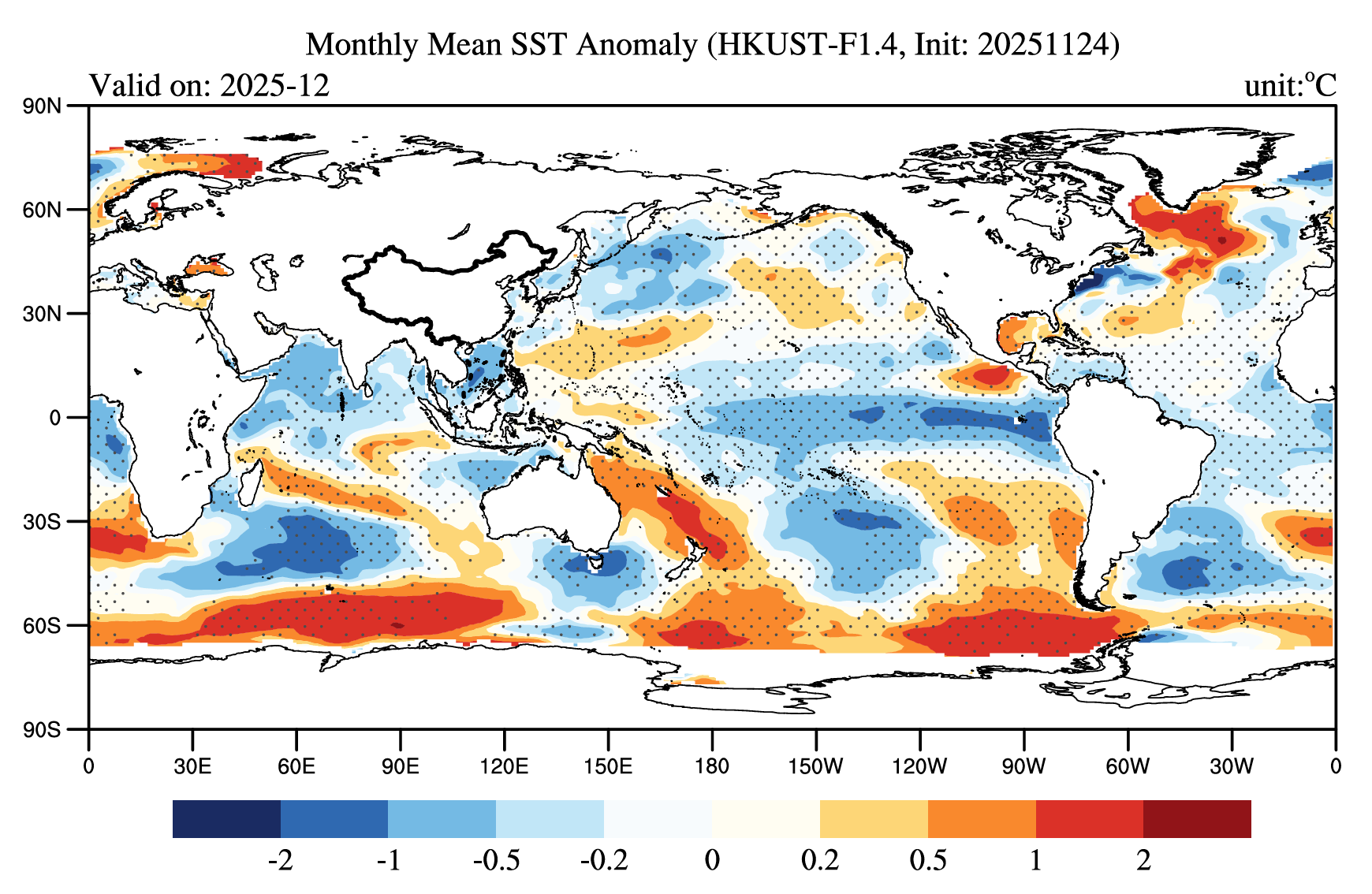In December 2025, near-surface temperatures across China are generally expected to be above average, although a cold anomaly is projected in the northeastern region. Significant warming is projected in western China, with temperature increases exceeding 1°C in areas such as the Tianshan Mountains, the Pamir Plateau, and the northern and eastern boundaries of the Qinghai-Tibet Plateau. Northern China, including most of the North China Plain and the Huang-Huai region, is expected to experience slightly above-average temperatures but remain close to climatological norms overall. Central and southern China are likely to experience mild warming, while the South China Sea region may see below-average temperatures. In northeastern Inner Mongolia, as well as Heilongjiang and Jilin provinces, near-surface temperatures will significantly below average, with temperature drops of 1–4°C observed around the Greater Khingan Range.
The La Niña phase is expected to persist and slightly strengthen, with SSTs in the eastern equatorial Pacific remaining more than 1°C below average. The negative phase of the Indian Ocean Dipole (IOD-) and mid-latitude warming in the North Pacific are both projected to weaken. Meanwhile, under the influence of La Niña teleconnections and the negative phase of the Southern Annular Mode (SAM), significant SST anomalies are observed in the Southern Hemisphere. A distinct "positive-negative-positive" triple pattern is observed in the mid-latitudes of the South Pacific, and SST near Antarctica is expected to remain notably above average.


Overall, near-surface temperatures in China during December 2025 are expected to follow a pattern of “overall warming with a cold anomaly in the northeast.” The northeastern region is likely to transition from last month’s warming anomaly to significant cooling this month, driven by more frequent and stronger cold air outbreaks. Northeastern areas should remain vigilant against episodic low-temperature events or severe cold waves and prepare in advance for energy supply adjustments, transportation security, and public safety measures. As the season progresses into deep winter, continuous monitoring of La Niña’s intensity and its teleconnection effects is crucial. Enhanced rolling assessments and forecasts of winter climate conditions are strongly recommended.
The present results are derived from the objective prediction methods developed by the SEPRESS team. The related products are scientific and technical outcomes, which can serve only as technical references for disaster prevention and mitigation, and should not be regarded as decision-making bases. It is recommended to further monitor subsequent forecasts issued by relevant official agencies.
——————————
The above monthly TC outlook is based on the SEPRESS Global Climate Seamless Prediction System. SEPRESS, or Seamless Prediction and Services for Sustainable Natural and Built Environments, is a global initiative led by the Hong Kong University of Science and Technology (HKUST) that translates scientific advancements in weather-to-climate (or, subseasonal-to-seasonal) prediction into practical, tailored solutions to enhance global climate resilience and sustainability. The initiative, endorsed by UNESCO, aims to bridge the gap between science and society by fostering partnerships and delivering actionable outcomes to support the UN’s Sustainable Development Goals. The SEPRESS team comprises hydrometeorologists and modelers from the HKUST, the Institute of Atmospheric Physics (Chinese Academy of Sciences), and Beijing Normal University.
Text and Figures contributed by: SONG Yurong, LI Shentong, ZHANG Shiyu